We’ll return to publishing gear reviews and other ski-related stories this week, not to diminish current events but to hopefully provide reprieve from the news. Coronavirus news updates and stories will be sprinkled in as we write them, and we encourage social responsibility in ski-related activities during this time.
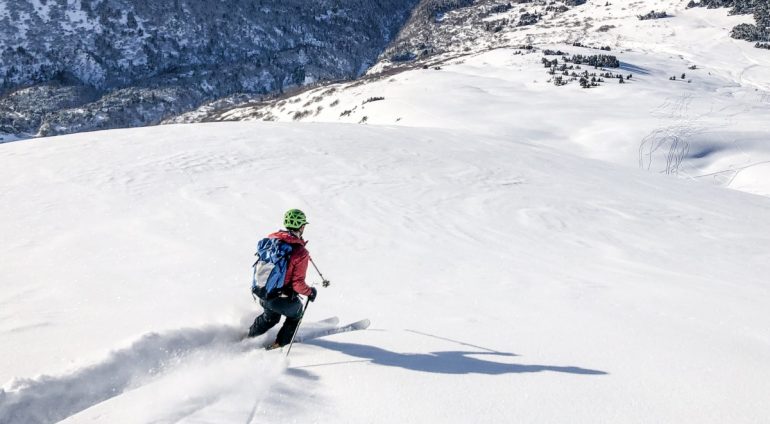
Paddling to the lip of the wave. Photo: Margi Dashevsky
I had only been surfing twice in my life before heading out into the Kenai Mountains for a weekend ski tour in early February. Both of my previous experiences involved surfboards in the ocean, but on this particular outing, I dropped in on the new G3 SLAYr 114. Okay – so I was skiing, but these skis ride deep snow like a North Shore shortboard – heck, they even look like surfboards. All I can say after taking these boards into the swell is right on, hang ten, far out, totally tubular (those are surfer things right?).
Okay, water sports aside, the SLAYr is a surfy, supercharged, ripping mountain machine, without the weight that has kept me off similar sized skis in recent years. My first few turns on the SLAYr were a bit of an adjustment – they do not want to swing around at low speeds, and like most bigger skis, you have to stay forward on your feet to drive them. Fortunately, however, they are darn stable going fast in surfy pow. That stability is what I have found most impressive. The SLAYr rounds out the G3 line, offering a true freeride powder ski – long early rise in the tip and tail, slight (1mm) camber underfoot, huge 143mm shovel, 114mm waist, and two full length strips of titanal aluminum make these things want to go fast and deep. The tapered tail and set back shovel evoke an endless summer surf shape in a powder ski.
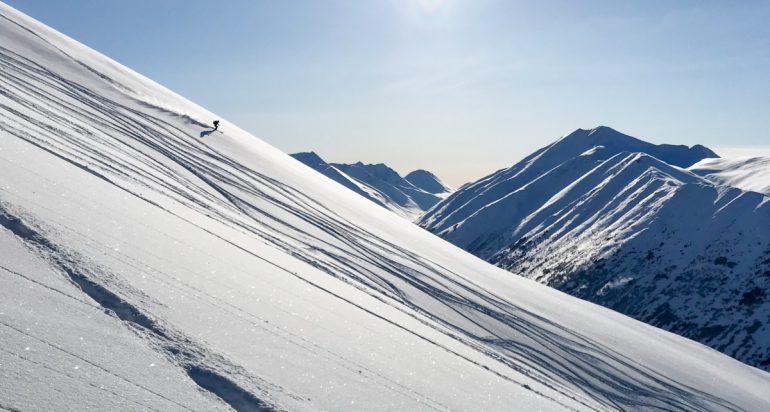
Just my kind of wave! Photo: John Lyons
At the same time, the G3 wizards managed to keep the scales magically light with a balsa core and full carbon construction. They are saying the 185s come in at 1.66kg per ski. I have found that manufacturers are usually a bit too generous when printing claim weights of ‘lightweight’ gear, but my scale only registered 1.5kg per ski! As a proud evangelist of the ‘light-is-right’ gospel – G3 really impresses me with the fat ski performance they have squeezed out of such a darn light board.
My first day out on these was at a low angle, popular spot about an hour south of Anchorage. The bowl dropping off of Manitoba Mountain was full of the squiggles and wiggles of skiers happy to find respite from wind slabs and persistent weak layers in steeper terrain. After a couple laps, I looked back up and noticed how much my tracks jumped out on the slope. Frankly the couple dozen symmetrical turn-farming combine lines looked boring juxtaposed against big, long, playfully freeride, SLAYr arcs.
[note: I am 175 lbs, 5’ 10’’ and have been skiing the SLAYr in the 185cm length, mounted with G3 ZED12 bindings, and on Salomon MTN Explore boots]
Getting the SLAYr out in steeper, bigger, deeper waves only makes the ride even better. Turnagain Pass, an hour south of Anchorage, offers just the point break to get these things going. The weight also makes them a great ski for quick afterwork laps, where speed keeps you ahead of the sunset, or for bigger days out and about. My most typical weekday ski is on ‘Peak 3’ an 1800ft frun in the Front Range of the Western Chugach, about 20 minutes from downtown Anchorage. I typically take speed weenie 76 underfoot skis, but with good snow falling, I have been taking the SLAYr and having a blast – this is a swap that I would have thought unimaginable, if not for the super light construction. Solid balance, a firm edge, and floaty feel on these skis are simply fun.
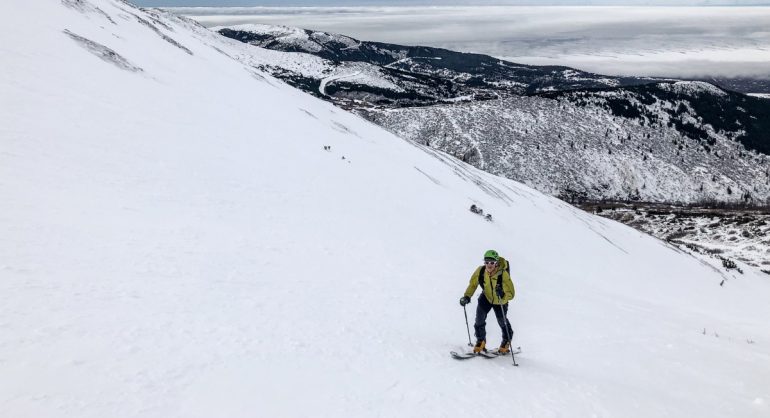
The SLAYr makes a 114mm underfoot ski with a skimo pack seem not so crazy…Photo: Eric Dahl
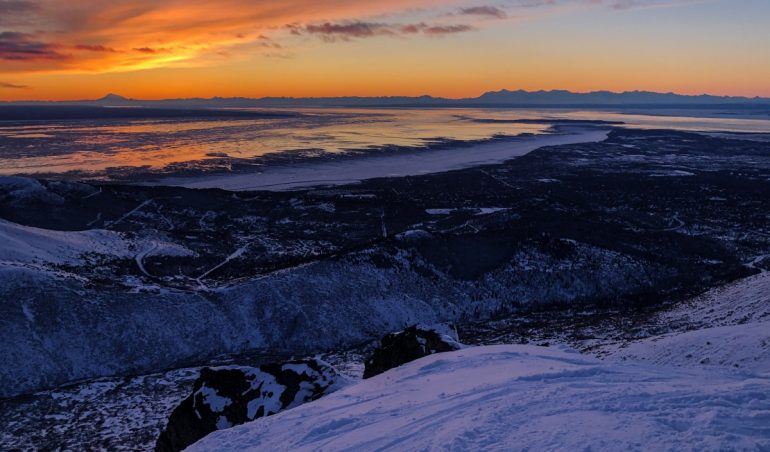
Watching the actual surf from Peak 3 at sunset.
Most light skis are small, turny, chatterboxes – the price to be paid for admissions to happy up-tracks and big days. The SLAYr is none of those things – it wants to make big, fast, aggressive turns. They remind me quite a bit of the old blue BD Zealot – a ski that I absolutely loved in the mountains, but was quickly knocked out of the quiver because of a scale busting 2.4 kg per ski. Hats off to G3 for pushing the freeride big ski into the 1.5 kilo weight class.
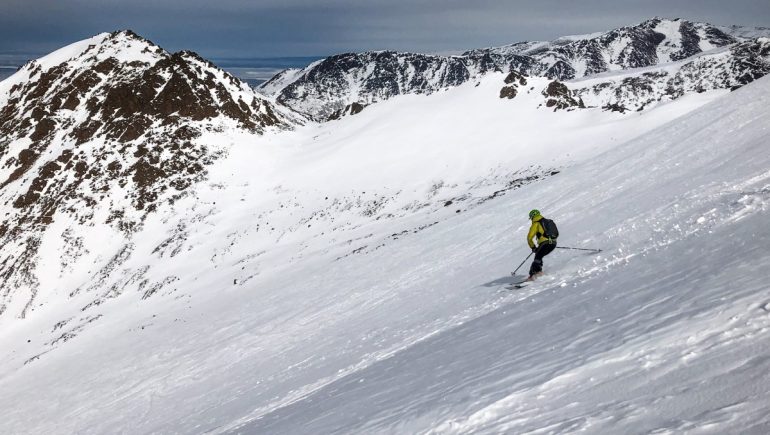
Crusty, crunchy, chunder turns above Anchorage. Photo: Eric Dahl
Along with the rest of the G3 line, the SLAYr has magnetic contact points that allow you to get by without a ski strap (the skis stick together when you align these points). These make for quick shouldering (it works, although its not like I’m slimming down my ski strap collection…). Polyurethane sidewalls and a high quality made-in-Canada build, should mean solid durability as well.
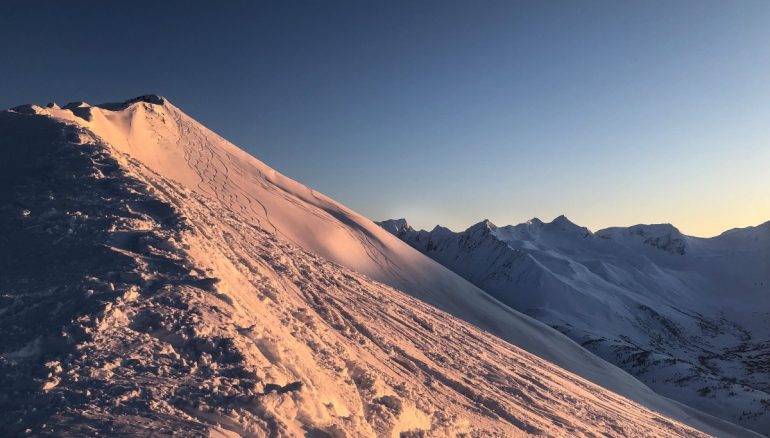
SLAYr terrain at Turnagain Pass.
Overall, I really like the SLAYr. I have taken them mostly in powder conditions, as that is their lane, they are a pow ski and in pow the SLAYr slays. A solid edge keeps them suitable in variable conditions, but simply put, they are not a quiver-of-one board. Carvable snow is fine, although the early rise and tapered tails make the SLAYr wash out a bit on real hardpack (as to be expected). The upside of this, is that the firmer the snow, the shorter the SLAYr skis, helping turn down the speed when conditions call for it. Techy skiing is out of their wheelhouse (hop turns on such a light wide board are both challenging and terrifying), but even a few inches of new snow feels deep on the SLAYr. I don’t think they are super beginner friendly – you really need to be forward over your feet, and comfortable with a longer aggressive turn to drive them. Although not a lazy longboard, the SLAYr is super fun for powder chargers. If you want to go fast on the down without getting slowed down on the up, and are looking for a true big mountain powder ski, check out the SLAYr.
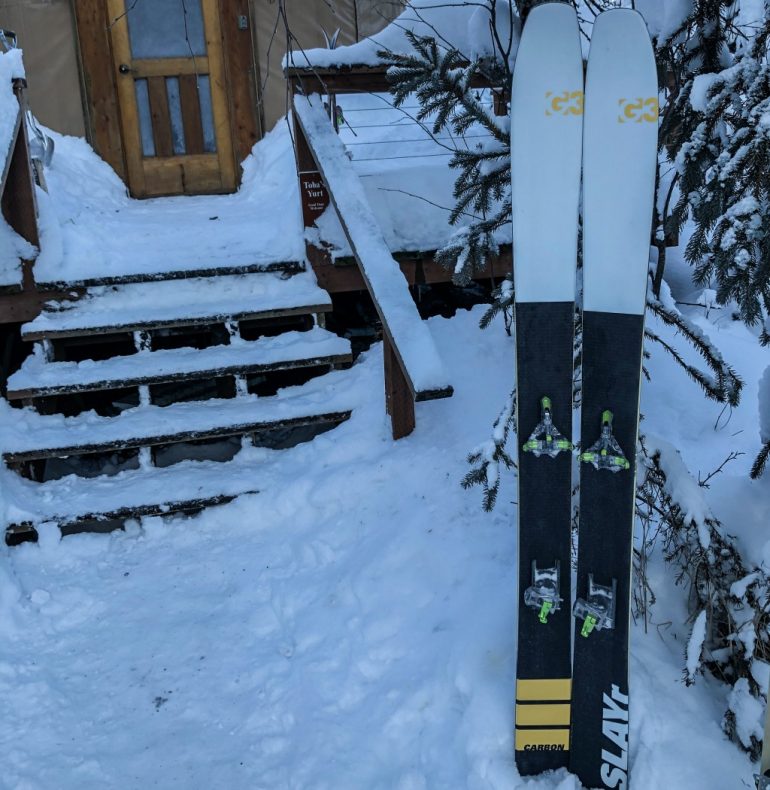
The SLAYr resting up after a day out in the Kenai Mountains.
I wrote this review before COVID-19 forced us to make drastic changes to daily life — I hope we can all paddle out into the big mountain swell and catch a few more snowy ski waves soon, whether it be socially distanced ski touring, or with much thanks and stoke next season.
The G3 SLAYr will be available in ski shops Fall 2020. See our previous G3 coverage and shop for other G3 skis here.
Dr. Alex Lee lives in Anchorage, Alaska. Alex is a professor at Alaska Pacific University, teaching philosophy and environmental studies. He also works as a sometimes guide, naturalist, writer, and photographer.
